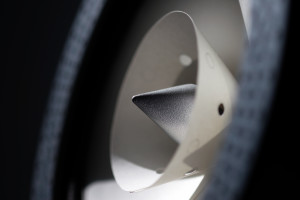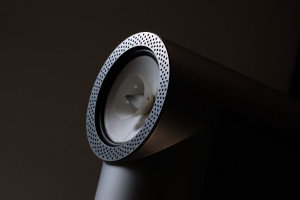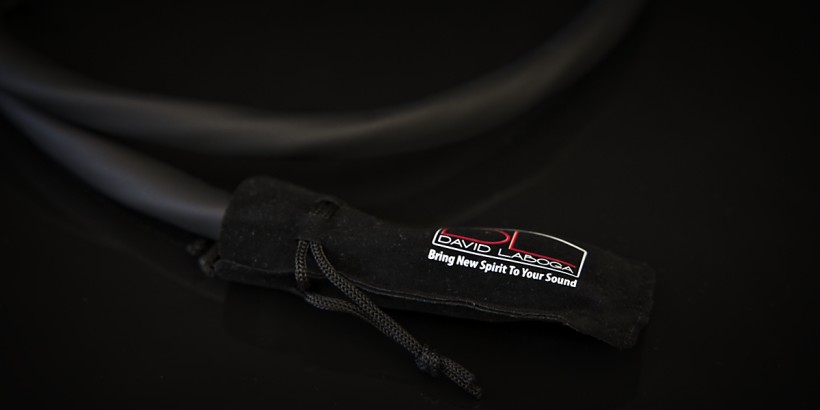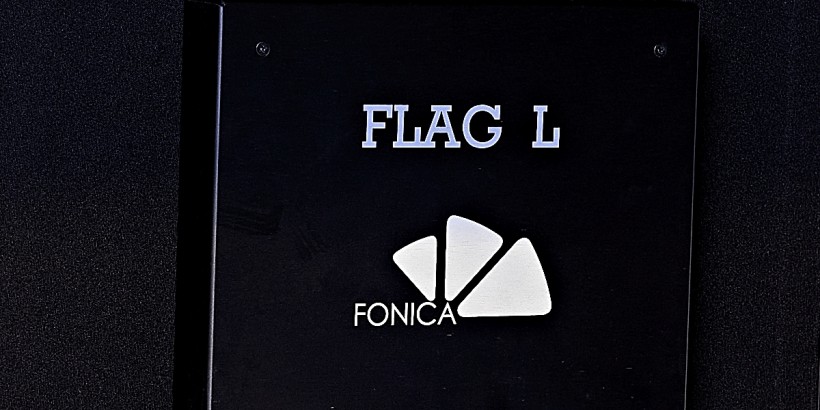Although full-range speakers loaded with powered bass aren’t as strong in number as their passive kin, they’ve been getting more and more popular in recent years. This review tackles the former type made by the company known for starting the active trend. Rethm Maarga has arrived, enjoy!
Introduction
Today’s story dates way back to the late 2011. Although at that time my job in IT industry narrowed down to affordable desktop audio hardware, I investigated audiophile exoticism way beyond my reach as a hobbyist, which eventually led me to Srajan’s place. Limited knowledge allowed me to only partially grasp design concepts behind many unusual products he wrote about and Rethm Maarga was one of them. When I first saw this peculiar loudspeaker case, I hadn’t had the faintest about engineering decisions and goals it involved. All I saw back then was a small odd driver not capable of throwing punches against floorstanders loaded with several bigger cones. Still, nearly a decade that passed since then is time long enough to learn a thing or two about full-range transducers and connect several dots previously imperceptible. In late 2019 Rethm and Lampizator joined forces at the annual Audio Video Show in Warsaw and the loudspeaker product showcased there was none other than Maarga. The former operation’s owner and founder – Jacob George – was there in person, which naturally opened the possibility to properly introduce myself. When Lady Luck creates such circumstances it’s best to exploit them, which is what I happily did. The lengthy conversation the two of us had resulted in the show loaner destined to travel from Lampizator’s HQ to my doorstep some time later. In early March 2020 it finally arrived.
In late 2019 Rethm and Lampizator joined forces at the annual Audio Video Show in Warsaw and the loudspeaker product showcased there was none other than Maarga. The former operation’s owner and founder – Jacob George – was there in person, which naturally opened the possibility to properly introduce myself. When Lady Luck creates such circumstances it’s best to exploit them, which is what I happily did. The lengthy conversation the two of us had resulted in the show loaner destined to travel from Lampizator’s HQ to my doorstep some time later. In early March 2020 it finally arrived. Jacob spared no details about his background and loudspeaker operation. As a teenager he designed i.e. cars to become an architect by education and also profession later on. As he put it, architecture is his bread and butter, which leaves Rethm a passionate side activity, although of no lesser importance. This audio company was officially established in 2000 and is located in the city of Cochin in southwest India’s coastal Kerala state. Jacob’s speakers are handmade in the same workshop he’s been using in his primary work. Upon asking the man about his take on music reproduction, he labeled this subjective aspect as both exasperating and fascinating for him as an audio designer, who is fully aware that there’s no such thing as a universally loved speaker. There was more to it though, so I dug deeper.
Jacob spared no details about his background and loudspeaker operation. As a teenager he designed i.e. cars to become an architect by education and also profession later on. As he put it, architecture is his bread and butter, which leaves Rethm a passionate side activity, although of no lesser importance. This audio company was officially established in 2000 and is located in the city of Cochin in southwest India’s coastal Kerala state. Jacob’s speakers are handmade in the same workshop he’s been using in his primary work. Upon asking the man about his take on music reproduction, he labeled this subjective aspect as both exasperating and fascinating for him as an audio designer, who is fully aware that there’s no such thing as a universally loved speaker. There was more to it though, so I dug deeper.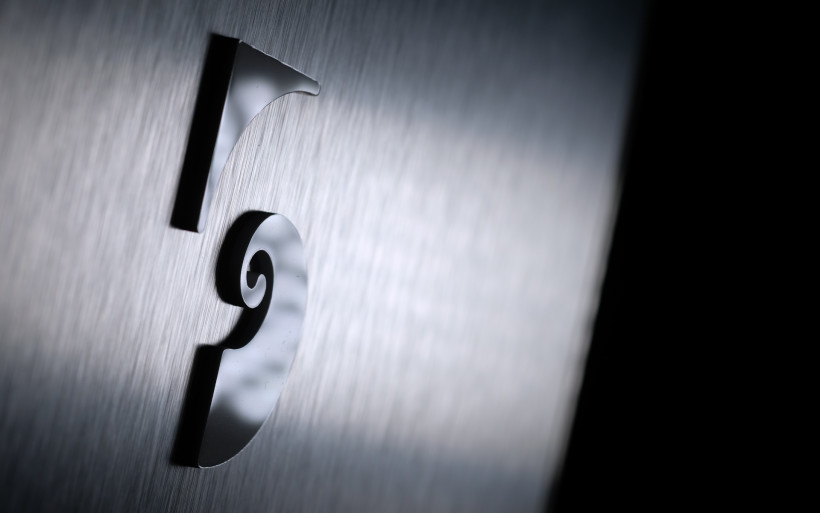 Jacob explained that years ago he faced the major decision of either pursuing the safe route of easily sellable designs, or taking the more challenging detour towards speakers to him as close to lifelike music presentation as possible. If you don’t buy into this story, one quick glimpse at Rethm’s portfolio is all it takes to note that cookie-cutter standard is prohibited in there. Today we’re at the opposite end and for just the right reason. As a child Jacob played violin and performed i.e. in his school orchestra and church choir to develop firm perception of real instruments’ voicing in the process. This utmost valuable reference point naturally influenced his future loudspeaker work. Liveness, directness and immediacy he listed as ultimate goals, whereas crossoverless high efficiency full-range drivers emerged as means necessary in achieving them. This niche transducer breed is widely known for sonic elegance, purity, expressiveness and accuracy to excel on instrumental and vocal tasks, so Jacob’s was no fairy tale. The critical choice to use widebanders was based on his thorough understanding of their core strengths more than anything else.
Jacob explained that years ago he faced the major decision of either pursuing the safe route of easily sellable designs, or taking the more challenging detour towards speakers to him as close to lifelike music presentation as possible. If you don’t buy into this story, one quick glimpse at Rethm’s portfolio is all it takes to note that cookie-cutter standard is prohibited in there. Today we’re at the opposite end and for just the right reason. As a child Jacob played violin and performed i.e. in his school orchestra and church choir to develop firm perception of real instruments’ voicing in the process. This utmost valuable reference point naturally influenced his future loudspeaker work. Liveness, directness and immediacy he listed as ultimate goals, whereas crossoverless high efficiency full-range drivers emerged as means necessary in achieving them. This niche transducer breed is widely known for sonic elegance, purity, expressiveness and accuracy to excel on instrumental and vocal tasks, so Jacob’s was no fairy tale. The critical choice to use widebanders was based on his thorough understanding of their core strengths more than anything else. Then Rethm’s CEO tackled the subject of a narrow tonal window, within which he’d call a given speaker correct. To him this particular trait has to be evident in any such quality product, ditto imaging potency. Jacob sees the latter element as the single most important in granting us the live event alike experience and compensating for lack of visual cues naturally present in reality. He wanted to provide listeners with the ability to aurally see each performer, layer and space itself, but effortlessly, explicitly and in full glory. Due to their point-source dispersion pattern, filterless full-range drivers thrive on spatial challenges. I was told that many elements in Rethm products were designed to optimize and enhance this specific aspect.
Then Rethm’s CEO tackled the subject of a narrow tonal window, within which he’d call a given speaker correct. To him this particular trait has to be evident in any such quality product, ditto imaging potency. Jacob sees the latter element as the single most important in granting us the live event alike experience and compensating for lack of visual cues naturally present in reality. He wanted to provide listeners with the ability to aurally see each performer, layer and space itself, but effortlessly, explicitly and in full glory. Due to their point-source dispersion pattern, filterless full-range drivers thrive on spatial challenges. I was told that many elements in Rethm products were designed to optimize and enhance this specific aspect.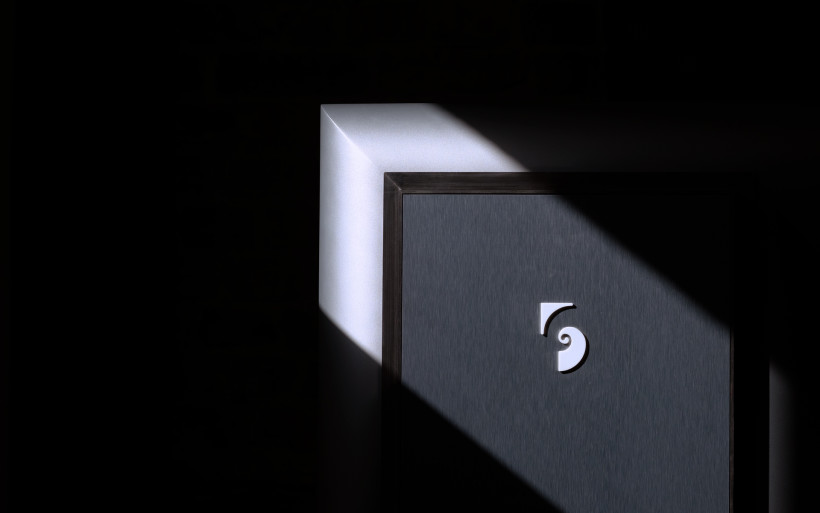 Although unusual topology and aesthetics are reasons good enough to label Rethm’s offer as very unique, there’s one highly important factor left. After years of being faithful to the passive widebander genre, Jacob wanted to up the ante on its bass response and in-room flexibility, which required a radically different approach and measures. He then scrapped his whole lineup and came up with the idea of augmenting full-range transducers with powered bass modules. Rethm’s first such effort – Saadhana – officially debuted in January 2007 at “The Show” in Las Vegas and was the first commercially available of its kind. The effect was grand enough for Jacob to implement active woofers in all his upcoming products including today’s. This feature became one of Rethm’s key characteristics.
Although unusual topology and aesthetics are reasons good enough to label Rethm’s offer as very unique, there’s one highly important factor left. After years of being faithful to the passive widebander genre, Jacob wanted to up the ante on its bass response and in-room flexibility, which required a radically different approach and measures. He then scrapped his whole lineup and came up with the idea of augmenting full-range transducers with powered bass modules. Rethm’s first such effort – Saadhana – officially debuted in January 2007 at “The Show” in Las Vegas and was the first commercially available of its kind. The effect was grand enough for Jacob to implement active woofers in all his upcoming products including today’s. This feature became one of Rethm’s key characteristics.
Build
As enjoyable and kosher as they are, purist full-range loudspeakers are demanding and not exactly easy to live with. In order to land decent bass they require capacious loading, which in most cases spells large clunky cabinets fit for one’s listening cave but not necessarily living room. Jacob’s way of connecting this lot’s key virtues with fully developed bandwidth and reasonable overall size, arrived in form of active bass assistance. This additive not only relieves core drivers from duty downstairs, but also unlocks the option to shrink their internal tunnels and in effect also enclosure dimensions. That’s a win-win-win scenario form the practical, visual and aural standpoint. As a bonus, let me add that petite active subs can easily go to places classic passive widebanders won’t unless loaded via monstrous horns. The only exception that comes to my mind would be Cube Audio’s amazing Nenuphar model reveiwed here, but even this one requires 127 liters of internal volume to get going and is 11cm wider versus today’s, which is a lot. It’s also worth knowing that Jacob’s active agenda wasn’t trivial to execute. The major difficulty was in his woofers’ proper integration with their speedy purist neighbours to have everything at the same coherent pace. Many manufacturers would agree that this challenge alone can take years out of a designer’s life.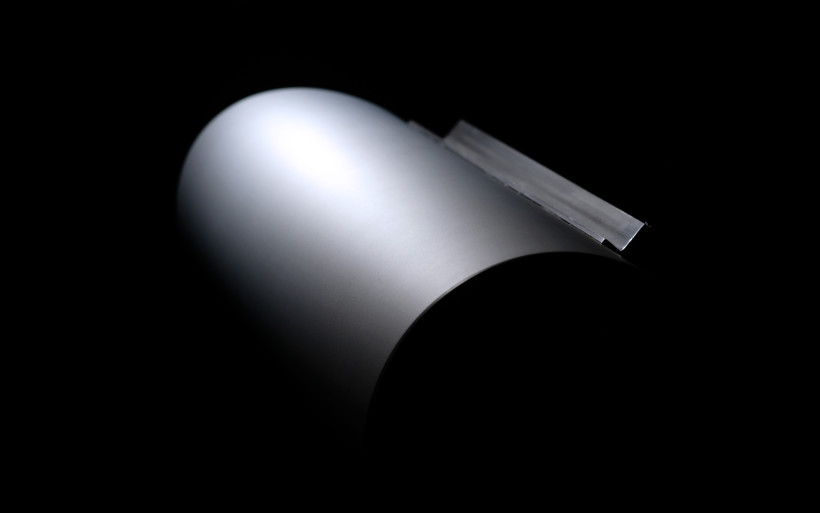 Rethm Maarga arrived in two separate cardboards of substantial mass and size. Łukasz Fikus assisted me in carrying these so tip of the hat to him. Each box was internally reinforced via two chipboard plates and loaded with foam fillers precisely cut to lock its content into place. All in all, the clamshell alike packaging I’ve found made well enough to withstand multiple trips. As far as specs go, each speaker measures (W x H x D) 190 x 550 x 1035mm and weighs 28kg, thus is reasonably easy to handle by one person. Today’s nominal impedance is 8Ω and frequency response of 98dB (@1W/1m) makes amps of puny power output (2wpc and up) viable.
Rethm Maarga arrived in two separate cardboards of substantial mass and size. Łukasz Fikus assisted me in carrying these so tip of the hat to him. Each box was internally reinforced via two chipboard plates and loaded with foam fillers precisely cut to lock its content into place. All in all, the clamshell alike packaging I’ve found made well enough to withstand multiple trips. As far as specs go, each speaker measures (W x H x D) 190 x 550 x 1035mm and weighs 28kg, thus is reasonably easy to handle by one person. Today’s nominal impedance is 8Ω and frequency response of 98dB (@1W/1m) makes amps of puny power output (2wpc and up) viable. Rethm Maarga’s exterior is not comparable to any other such product I’m familiar with. It’s quite clear to me that, as an architect into aesthetically modern domestic designs, Jacob aimed at an optically slim sporty ornament of one’s living space rather than a regular speaker affair. Whether the effect is likable or not is a matter up to a subjective debate, but the Indian loaner’s distinctiveness and personality on this count isn’t. In my book this report’s product is visually very tasteful and appealing.
Rethm Maarga’s exterior is not comparable to any other such product I’m familiar with. It’s quite clear to me that, as an architect into aesthetically modern domestic designs, Jacob aimed at an optically slim sporty ornament of one’s living space rather than a regular speaker affair. Whether the effect is likable or not is a matter up to a subjective debate, but the Indian loaner’s distinctiveness and personality on this count isn’t. In my book this report’s product is visually very tasteful and appealing. Maarga’s visual roundness is the effect of three large fiberglass pipes merged together; the uppermost piece housing Rethm’s own widebander unit plus two descending front and rear tubes. But most importantly, two of these elements partake in Jacob’s 2m long prison break plot to output said driver’s upper bass energy only towards the front. Its cone’s rear strokes pump air through the horizontal pipe to then at its end take a 90⁰ turn and go through the rear vertical tunnel all the way down to the cabinet’s bottom. From there yet another right angle turn marks a short horizontal trip just underneath a triangular bass reflector, and finally escape thorough a mouth hidden by a mesh cover just below the headmost pipe. To simplify, this plan visually would be the inverted C with its back and Maarga’s rear as the same thing.
Maarga’s visual roundness is the effect of three large fiberglass pipes merged together; the uppermost piece housing Rethm’s own widebander unit plus two descending front and rear tubes. But most importantly, two of these elements partake in Jacob’s 2m long prison break plot to output said driver’s upper bass energy only towards the front. Its cone’s rear strokes pump air through the horizontal pipe to then at its end take a 90⁰ turn and go through the rear vertical tunnel all the way down to the cabinet’s bottom. From there yet another right angle turn marks a short horizontal trip just underneath a triangular bass reflector, and finally escape thorough a mouth hidden by a mesh cover just below the headmost pipe. To simplify, this plan visually would be the inverted C with its back and Maarga’s rear as the same thing. My loaner arrived with its side panels silver to match the product’s primary colour, but upon wish one can order these flat surfaces i.e. veneered or glossy black. Each Maarga’s cheek sits inside of a reinforcing steel frame with two sets of eight cubes in total, four of which are threaded to connect with auxiliary leveling legs. These bolts can be turned both ways and are flat at the bottom to nicely lock into shallow concaves of provided decoupling sorters. Each puck consists of two round steel discs and three ball bearings in-between. This solution is known for its effectiveness and in most cases has to be purchased separately, but Maarga’s bill already includes it as the standard feature. Good stuff.
My loaner arrived with its side panels silver to match the product’s primary colour, but upon wish one can order these flat surfaces i.e. veneered or glossy black. Each Maarga’s cheek sits inside of a reinforcing steel frame with two sets of eight cubes in total, four of which are threaded to connect with auxiliary leveling legs. These bolts can be turned both ways and are flat at the bottom to nicely lock into shallow concaves of provided decoupling sorters. Each puck consists of two round steel discs and three ball bearings in-between. This solution is known for its effectiveness and in most cases has to be purchased separately, but Maarga’s bill already includes it as the standard feature. Good stuff. Each speaker’s bottom section incorporates a large rectangular opening with a diagonal reflector inside for a downfiring 6×9″ membrane just a hair above it, but that’s not all of it. Maarga’s bass module is based on two isobarically loaded woofers (91dB @1W/1m). Both get the same signal from an amp, but only the one assisted by a triangular reflective piece propagates into a room, whereas the other fires inside of a sealed 20 liter internal chamber to create variable pressure for the former’s excursions and boost its performance in effect. Now the external woofer thinks it’s free in open space and acts accordingly, but in reality it’s not.
Each speaker’s bottom section incorporates a large rectangular opening with a diagonal reflector inside for a downfiring 6×9″ membrane just a hair above it, but that’s not all of it. Maarga’s bass module is based on two isobarically loaded woofers (91dB @1W/1m). Both get the same signal from an amp, but only the one assisted by a triangular reflective piece propagates into a room, whereas the other fires inside of a sealed 20 liter internal chamber to create variable pressure for the former’s excursions and boost its performance in effect. Now the external woofer thinks it’s free in open space and acts accordingly, but in reality it’s not. Although costly to make versus regular solutions, Isobaric bass naturally doesn’t involve any venting and is damn effective in return. Today’s two woofers per channel run on a single 400wpc class D mono amp by Hypex, applied internally at the base and connected with the acrylic rear panel. It houses an IEC socket with a self-replaceable fuse, speaker terminals willing to accept only regular banana/BFA plugs, separate ground-lift and on/off switches and two very useful knobs; one responsible for bass level and the other for its cut-off frequency (60/120/240Hz). Although Maarga operates just as any regular passive speaker, its IEC inlets inform us about the extra need of one power cord per bass module. The product can run with its active components switched off, but naturally goes nowhere near as low and juicy.
Although costly to make versus regular solutions, Isobaric bass naturally doesn’t involve any venting and is damn effective in return. Today’s two woofers per channel run on a single 400wpc class D mono amp by Hypex, applied internally at the base and connected with the acrylic rear panel. It houses an IEC socket with a self-replaceable fuse, speaker terminals willing to accept only regular banana/BFA plugs, separate ground-lift and on/off switches and two very useful knobs; one responsible for bass level and the other for its cut-off frequency (60/120/240Hz). Although Maarga operates just as any regular passive speaker, its IEC inlets inform us about the extra need of one power cord per bass module. The product can run with its active components switched off, but naturally goes nowhere near as low and juicy. For years Jacob relied on full-range drivers by Lowther but never was in 100% satisfied with them, which is why at some point the decision was made to mint Rethm’s own series. This task was outsourced to Milind Petel, who previously worked as R&D chief at Peerless and in 2010 left to fund his own company Hermit Audio. The Maarga’s 6″ transducer (96db @1W/1m/1khz) runs without any filter and sports a neodymium motor unit, foam suspension, spade-alike phase plug and a paper cone attached to a whizzer with six openings in total. The driver’s basket rim is covered by a generously perforated flat external ring, which helps in having high FR diffraction in check and contributes to the product’s look.
For years Jacob relied on full-range drivers by Lowther but never was in 100% satisfied with them, which is why at some point the decision was made to mint Rethm’s own series. This task was outsourced to Milind Petel, who previously worked as R&D chief at Peerless and in 2010 left to fund his own company Hermit Audio. The Maarga’s 6″ transducer (96db @1W/1m/1khz) runs without any filter and sports a neodymium motor unit, foam suspension, spade-alike phase plug and a paper cone attached to a whizzer with six openings in total. The driver’s basket rim is covered by a generously perforated flat external ring, which helps in having high FR diffraction in check and contributes to the product’s look. The loaner delivered to me was Maarga’s third and latest incarnation. The original model released about a decade ago underwent two sets of changes since then. In 2016 Jacob swapped his own class AB amp in favour of a 180wpc class D by Hypex, and also changed 6″ circular woofers to oval 6×9″ drivers, which also made cabinets 5cm deeper. More fundamental reworks were done in 2019. The new bass amp by the same manufacturer now had a stout 400wpc. Sealed chambers behind internal woofers increased in volume and Maarga’s enclosure became a bit wider as well. Full-range whizzer cones were also modified to further decrease occasional shout and inject extra smoothness. Regular spikes were replaced by more effective ball-bearing decouplers. New finishing options became available and several external enclosure changes happened as well. A thick plywood piece just next to each widebander was removed to substantially increase their lower midrange energy. The labyrinth plus bottom deck were also modified, which Jacob labeled as a major job worth the effort. Maarga’s older version had its both vertical tubes open at the bottom, whereas the latest has only one mouth at the front and I was told that it performs significantly better in upper bass and low midrange. Two mesh panels were applied where previously was open space, which made today’s visually more monolithic and coherent.
The loaner delivered to me was Maarga’s third and latest incarnation. The original model released about a decade ago underwent two sets of changes since then. In 2016 Jacob swapped his own class AB amp in favour of a 180wpc class D by Hypex, and also changed 6″ circular woofers to oval 6×9″ drivers, which also made cabinets 5cm deeper. More fundamental reworks were done in 2019. The new bass amp by the same manufacturer now had a stout 400wpc. Sealed chambers behind internal woofers increased in volume and Maarga’s enclosure became a bit wider as well. Full-range whizzer cones were also modified to further decrease occasional shout and inject extra smoothness. Regular spikes were replaced by more effective ball-bearing decouplers. New finishing options became available and several external enclosure changes happened as well. A thick plywood piece just next to each widebander was removed to substantially increase their lower midrange energy. The labyrinth plus bottom deck were also modified, which Jacob labeled as a major job worth the effort. Maarga’s older version had its both vertical tubes open at the bottom, whereas the latest has only one mouth at the front and I was told that it performs significantly better in upper bass and low midrange. Two mesh panels were applied where previously was open space, which made today’s visually more monolithic and coherent. In Sanskrit the word ‘Rethm’ translates to harmony, whereas Jacob’s model names were conceived in a group to denote several stages in a musician’s journey; ‘the search’ is Trishna, Maarga is ‘the method’ or ‘the means’ and Saadhana stands for ‘the practice’ or ‘the training’. Once that’s done, one can only attain enlightenment, but that’s a story for another time. What matters now is the list of fields this report’s Maarga covers. Tasty aesthetics? Check. Compliance with low power amps? Check. Reasonable sizing and plenty of adjustable bass? Check and check. Sound quality? Ah, that’s the only one missing.
In Sanskrit the word ‘Rethm’ translates to harmony, whereas Jacob’s model names were conceived in a group to denote several stages in a musician’s journey; ‘the search’ is Trishna, Maarga is ‘the method’ or ‘the means’ and Saadhana stands for ‘the practice’ or ‘the training’. Once that’s done, one can only attain enlightenment, but that’s a story for another time. What matters now is the list of fields this report’s Maarga covers. Tasty aesthetics? Check. Compliance with low power amps? Check. Reasonable sizing and plenty of adjustable bass? Check and check. Sound quality? Ah, that’s the only one missing.
Sound
In order to review Rethm Maarga, fidata HFAS-S10U handled storage and transport duties, then LampizatOr Pacific DAC (KR Audio T-100/Living Voice 300B + KR Audio 5U4G Ltd. Ed.) took over to pass the signal either to Kinki Studio EX-M1, Trilogy 925, Bakoon AMP-13R or FirstWatt F7 plus Thöress DFP and then to today’s with the Boenicke Audio S3 speaker cable in-between. All key components were connected via LessLoss C-MARC cords to the GigaWatt PC-3 SE EVO+ power conditioner, which was then married to the main in-wall outlet via the LC-3 EVO cable by the same manufacturer. Interconnects on duty were the Boenicke Audio IC3 CG and, if necessary, the Amber-modded Excellence set by Audiomica Laboratory. Although Rethm Maarga’s place in my listening room was the first order of business, Cube Audio Nenuphar already marked the promising location several months ago. No toe-in at all plus 80/100cm respectively to side/front walls did the trick. There was no need to reinvent the wheel. The Cube alike placement rendered Indian speakers spatially invisible and their bass was in perfect check. To put this into perspective, my W11 SE+ remains within the same distance to lateral surfaces but needs twice as much space to the front wall, otherwise some of its spatial magic evaporates. From purely practical standpoint, Maarga scored higher notes on room integration and emerged as the more domestic of the two.
Although Rethm Maarga’s place in my listening room was the first order of business, Cube Audio Nenuphar already marked the promising location several months ago. No toe-in at all plus 80/100cm respectively to side/front walls did the trick. There was no need to reinvent the wheel. The Cube alike placement rendered Indian speakers spatially invisible and their bass was in perfect check. To put this into perspective, my W11 SE+ remains within the same distance to lateral surfaces but needs twice as much space to the front wall, otherwise some of its spatial magic evaporates. From purely practical standpoint, Maarga scored higher notes on room integration and emerged as the more domestic of the two. The next step involved available bass adjustments. The purist horn-loaded widebander breed doesn’t enjoy damping, thus naturally leans more towards valves than transistors. If pressed too hard, such drivers don’t cut it on downstairs reach and heft, but Maarga’s independent active bits couldn’t care less, which makes its feasible amplification range far broader versus picky regular passive full-range specimens. This flexibility is in fact one of today’s greatest virtues. Jacob encouraged me to experiment with knobs on my loaner’s rear and I happily obliged, but the first option instinctively selected granted me the golden ticket. The bass level set in the middle and cut off at 120Hz, resulted in a proper intestinal massage, plenty of torque and not a hint of boom or veil above.
The next step involved available bass adjustments. The purist horn-loaded widebander breed doesn’t enjoy damping, thus naturally leans more towards valves than transistors. If pressed too hard, such drivers don’t cut it on downstairs reach and heft, but Maarga’s independent active bits couldn’t care less, which makes its feasible amplification range far broader versus picky regular passive full-range specimens. This flexibility is in fact one of today’s greatest virtues. Jacob encouraged me to experiment with knobs on my loaner’s rear and I happily obliged, but the first option instinctively selected granted me the golden ticket. The bass level set in the middle and cut off at 120Hz, resulted in a proper intestinal massage, plenty of torque and not a hint of boom or veil above. All four amps I had on hand exploited transistors as output devices. It’s a mixed bag of high and low power plus various DF values. After taking all available hardware’s specs and unique sound profiles into account, I predicted the Kinki Studio EX-M1 as the least suitable companion for Maarga, then the Bakoon AMP-13R and either the Trilogy 925 or FirstWatt F7 as the best match. It made sense to label the Chinese’s 215wpc, DF of 2’000 plus informative, lean and agile voicing as not really beneficial for the Indian specimen. I wasn’t wrong, the EX-M1 rather quickly emerged as the bottom feeder indeed, however the 3rd place taken by the 925 was unexpected. The Brit’s romantic, saturated and charming flavour plus valve-alike DF seemed a spot on fit for Maarga and it landed way above the Kinki, but also a fair bit below the Bakoon, which in fact shared the 1st place with the F7. Here’s where this review’s performance chapter truly begins.
All four amps I had on hand exploited transistors as output devices. It’s a mixed bag of high and low power plus various DF values. After taking all available hardware’s specs and unique sound profiles into account, I predicted the Kinki Studio EX-M1 as the least suitable companion for Maarga, then the Bakoon AMP-13R and either the Trilogy 925 or FirstWatt F7 as the best match. It made sense to label the Chinese’s 215wpc, DF of 2’000 plus informative, lean and agile voicing as not really beneficial for the Indian specimen. I wasn’t wrong, the EX-M1 rather quickly emerged as the bottom feeder indeed, however the 3rd place taken by the 925 was unexpected. The Brit’s romantic, saturated and charming flavour plus valve-alike DF seemed a spot on fit for Maarga and it landed way above the Kinki, but also a fair bit below the Bakoon, which in fact shared the 1st place with the F7. Here’s where this review’s performance chapter truly begins. Rethm Maarga very quickly introduced itself as utmost capable on spatial presence. It painted wide, tall, and admirably deep landscapes, filled with virtual sound sources nicely outlined, fetching and evenly displayed. That unmistakable widebander quickness, pinpoint accuracy, light overall footprint and natural charm were heard in an instant and combined with everything else in a very interesting way. All full-range products I’m familiar with sport very expressive, pronounced and delicate midrange. It’s fair to say that this particular quality is one of key attractors for enthusiasts into such goods. On this count Maarga didn’t disappoint though was less mid-centric and forward sounding than one would expect, whereas its active twist made it far sportier and upright than fully passive widebanders usually allow.
Rethm Maarga very quickly introduced itself as utmost capable on spatial presence. It painted wide, tall, and admirably deep landscapes, filled with virtual sound sources nicely outlined, fetching and evenly displayed. That unmistakable widebander quickness, pinpoint accuracy, light overall footprint and natural charm were heard in an instant and combined with everything else in a very interesting way. All full-range products I’m familiar with sport very expressive, pronounced and delicate midrange. It’s fair to say that this particular quality is one of key attractors for enthusiasts into such goods. On this count Maarga didn’t disappoint though was less mid-centric and forward sounding than one would expect, whereas its active twist made it far sportier and upright than fully passive widebanders usually allow. Although inherently very accurate, open and explicit with no doubt, Jacob’s second best struck me as equally geared towards speed, slam, shove, low end energy and the lot. I imagine that active bass quick enough to properly integrate with full-range drivers is a task to behold, but in this regard Maarga’s performance was utmost coherent and quite frankly impeccable. One particular track was all it took for me to fully grasp the sensation. “Inchworm” from the Gloss Drop LP by Battles has plenty of everything; openness, zealous bass lines, generous dynamic contrasts, background busyness, upstairs shimmer and lots of air constantly pushed towards a listener. Today’s filled my place with impressive wall of sound and kept everything perfectly tight, insightful and orderly to land fresh and admirably elastic, palpable effect. But most importantly, it didn’t skip or overstretch even one beat and was completely free from any wobble. An outcome this liberated, effortless and finely balanced coloured me very impressed, whereas Acid’s “Creeper” reassured me in my observations.
Although inherently very accurate, open and explicit with no doubt, Jacob’s second best struck me as equally geared towards speed, slam, shove, low end energy and the lot. I imagine that active bass quick enough to properly integrate with full-range drivers is a task to behold, but in this regard Maarga’s performance was utmost coherent and quite frankly impeccable. One particular track was all it took for me to fully grasp the sensation. “Inchworm” from the Gloss Drop LP by Battles has plenty of everything; openness, zealous bass lines, generous dynamic contrasts, background busyness, upstairs shimmer and lots of air constantly pushed towards a listener. Today’s filled my place with impressive wall of sound and kept everything perfectly tight, insightful and orderly to land fresh and admirably elastic, palpable effect. But most importantly, it didn’t skip or overstretch even one beat and was completely free from any wobble. An outcome this liberated, effortless and finely balanced coloured me very impressed, whereas Acid’s “Creeper” reassured me in my observations.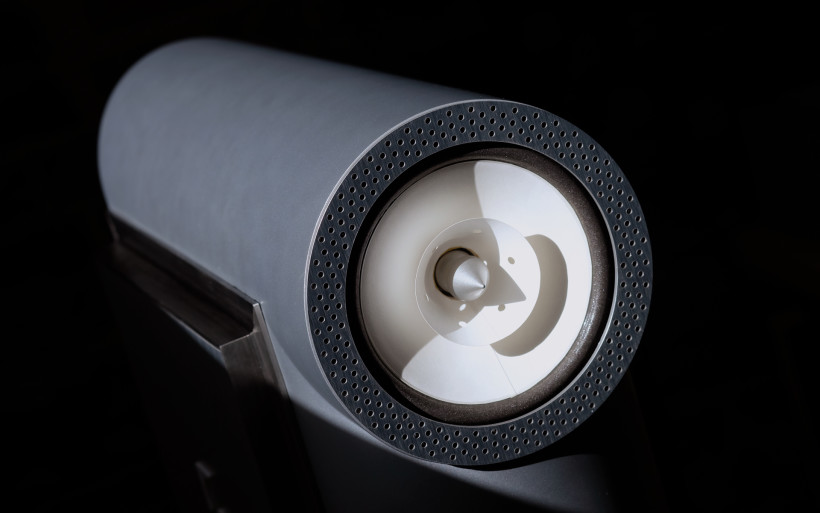 Maarga’s downstairs behaviour was flawless by my standards. The Indian simply went to places most conventional speakers wouldn’t and did so with no strings attached. Its isobaric plot in my room reached as low as it was necessary, had a spot on stiffness-to-filler ratio, was admirably feisty, complex, impactful, well-defined and in perfect control over even the craziest fiercest music stunts on my playlist. Put shortly, bass served like so provided the full care package to effectively leave any privy craves for more at the door. Perhaps in spaces larger than mine I’d enjoy one aspect or another done somewhat differently. Perhaps in rooms twice as big Maarga would run out of steam at some point, but that’s irrelevant guesswork.
Maarga’s downstairs behaviour was flawless by my standards. The Indian simply went to places most conventional speakers wouldn’t and did so with no strings attached. Its isobaric plot in my room reached as low as it was necessary, had a spot on stiffness-to-filler ratio, was admirably feisty, complex, impactful, well-defined and in perfect control over even the craziest fiercest music stunts on my playlist. Put shortly, bass served like so provided the full care package to effectively leave any privy craves for more at the door. Perhaps in spaces larger than mine I’d enjoy one aspect or another done somewhat differently. Perhaps in rooms twice as big Maarga would run out of steam at some point, but that’s irrelevant guesswork.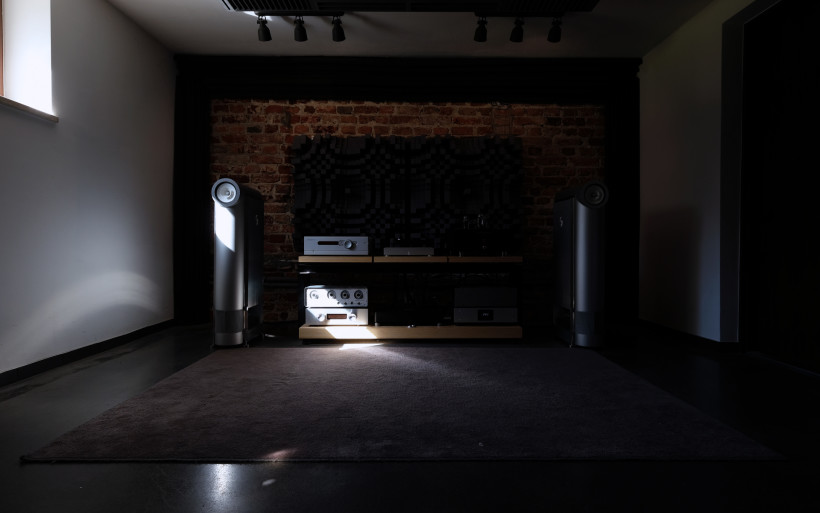 Admirable insight, lots of horsepower and midrange in line with everything else, in effect turned Rethm Maarga into very much feasible for repertoire considered as less than ideal for regular full-range drivers. Tool’s “Prison Sex” and “Jambi” plus “Wretched”, “Somewhat Damaged” and “We’re In This Together” by Nine Inch Nails were free from shout, powerful, very snappy and downright stately. As capable of open-throated big bore musical acts as it was, the Indian loaner also did a spot on job with minimalist instrumental pieces and vocal lines. Tribal work by Danheim, Wardruna and Heilung sounded hauntingly and atmospheric just as it should, but also finely moisturized, clear, liberated from sharp edges and not garish at all. “Hurt” covered by Johny Cash was nothing short of a very sad and personal tearjerker, whereas Luca Stricagnoli’s guitar take on “The Last of the Mohicans” showed very clearly how powerful such instruments’ resonant boxes can be. Female voice on Massive Attack’s “Teardrop” was utmost delicate and soothing, whereas the same group’s “Girl I Love you” brilliantly shifted mood towards something more disturbing and spicier. Landscapes and guitar plucks heard on Carter Burwell’s “Blood Trails” were as sensible as they were spatially majestic.
Admirable insight, lots of horsepower and midrange in line with everything else, in effect turned Rethm Maarga into very much feasible for repertoire considered as less than ideal for regular full-range drivers. Tool’s “Prison Sex” and “Jambi” plus “Wretched”, “Somewhat Damaged” and “We’re In This Together” by Nine Inch Nails were free from shout, powerful, very snappy and downright stately. As capable of open-throated big bore musical acts as it was, the Indian loaner also did a spot on job with minimalist instrumental pieces and vocal lines. Tribal work by Danheim, Wardruna and Heilung sounded hauntingly and atmospheric just as it should, but also finely moisturized, clear, liberated from sharp edges and not garish at all. “Hurt” covered by Johny Cash was nothing short of a very sad and personal tearjerker, whereas Luca Stricagnoli’s guitar take on “The Last of the Mohicans” showed very clearly how powerful such instruments’ resonant boxes can be. Female voice on Massive Attack’s “Teardrop” was utmost delicate and soothing, whereas the same group’s “Girl I Love you” brilliantly shifted mood towards something more disturbing and spicier. Landscapes and guitar plucks heard on Carter Burwell’s “Blood Trails” were as sensible as they were spatially majestic. I could go on and on, but the key thing to take note of is the fact that Rethm Maarga executed every musical challenge very effortlessly regardless of SPL, which now allows me to label it as not picky at all and capable of going really loud very easefully. It capably showed all kinds of sides; from sweet, calm and intimate to instant, fast and fully open plus. It always sounded enjoyably fresh and agile yet never dull or fuzzy. Recording quality had to be on point however, full-range transducers are revealing by nature, thus can effectively render repertoire underperforming on this count as brittle, flat and plainly unlistenable. That’s hardly any news, this specific factor gains importance along with our setups’ quality increase, to at some point become as relevant as everything else.
I could go on and on, but the key thing to take note of is the fact that Rethm Maarga executed every musical challenge very effortlessly regardless of SPL, which now allows me to label it as not picky at all and capable of going really loud very easefully. It capably showed all kinds of sides; from sweet, calm and intimate to instant, fast and fully open plus. It always sounded enjoyably fresh and agile yet never dull or fuzzy. Recording quality had to be on point however, full-range transducers are revealing by nature, thus can effectively render repertoire underperforming on this count as brittle, flat and plainly unlistenable. That’s hardly any news, this specific factor gains importance along with our setups’ quality increase, to at some point become as relevant as everything else. Let’s get back to the two hardware combinations my ears mapped as the best with Jacob’s speakers. FirstWatt F7 all by itself excels on textural richness, smoothness and qualities typical for well-made class A. Although speed, clarity, openness and resolution aren’t its key fortes, Thöress DFP significantly boosts these exact features and injects extra power on the very bottom. Rethm Maarga fronted by the two listed products sounded exceptionally naturally, whereas all inherently silent cables used in my setup showcased associated wetness, elasticity, expressiveness and resolve brilliantly to further elevate the already quick and posh experience.
Let’s get back to the two hardware combinations my ears mapped as the best with Jacob’s speakers. FirstWatt F7 all by itself excels on textural richness, smoothness and qualities typical for well-made class A. Although speed, clarity, openness and resolution aren’t its key fortes, Thöress DFP significantly boosts these exact features and injects extra power on the very bottom. Rethm Maarga fronted by the two listed products sounded exceptionally naturally, whereas all inherently silent cables used in my setup showcased associated wetness, elasticity, expressiveness and resolve brilliantly to further elevate the already quick and posh experience. The Bakoon AMP-13R in theory should sound icy and thin with today’s load, but no such thing happened. In reality it was a bit leaner and more contoured versus the F7/DFP combo, but no less effortless, texturally loaded, smooth, palpable and feisty. The Bakoon prioritized outlines more than their filler, but on sheer quality scored as equally high and didn’t sound thin at all. The 925 did very well with Maarga too, but was clearly geared towards density, relaxation and robust sound sources served up close. On detail retrieval however it didn’t play in the top league, thus wasn’t as balanced as my top choices for Maarga.
The Bakoon AMP-13R in theory should sound icy and thin with today’s load, but no such thing happened. In reality it was a bit leaner and more contoured versus the F7/DFP combo, but no less effortless, texturally loaded, smooth, palpable and feisty. The Bakoon prioritized outlines more than their filler, but on sheer quality scored as equally high and didn’t sound thin at all. The 925 did very well with Maarga too, but was clearly geared towards density, relaxation and robust sound sources served up close. On detail retrieval however it didn’t play in the top league, thus wasn’t as balanced as my top choices for Maarga.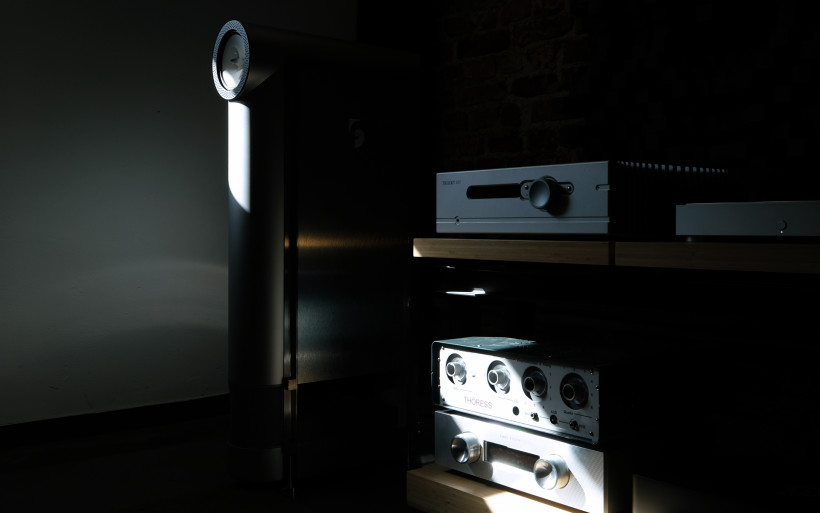 The description above might imply a do-it-all ultimate speaker product, but no such thing exists. Although Cube Audio’s Nenuphar is long gone, I remembered its rear-loaded F10 Neo drivers well. Against Jacob’s second best the local product would most likely emerge as more effortless, spatially grander, fleshier, midrange wise closer and more capable on sensible aural presence in my room and textural richness. I won’t even attempt to guess which one of the two products would do better bass as both are fantastic on this count. My gut tells me that the very potent Maarga has what it takes to jump over Cube’s purist passive boxes, but whether it truly would? I can’t know for sure without comparing them directly. In any case, Maarga’s limitations are most likely associated with its cones’ diameter. Along with its radiation surface increase I’d propably get even lesser tension, greater ease, bigger dynamic scale, more body and quite possibly also vividness.
The description above might imply a do-it-all ultimate speaker product, but no such thing exists. Although Cube Audio’s Nenuphar is long gone, I remembered its rear-loaded F10 Neo drivers well. Against Jacob’s second best the local product would most likely emerge as more effortless, spatially grander, fleshier, midrange wise closer and more capable on sensible aural presence in my room and textural richness. I won’t even attempt to guess which one of the two products would do better bass as both are fantastic on this count. My gut tells me that the very potent Maarga has what it takes to jump over Cube’s purist passive boxes, but whether it truly would? I can’t know for sure without comparing them directly. In any case, Maarga’s limitations are most likely associated with its cones’ diameter. Along with its radiation surface increase I’d propably get even lesser tension, greater ease, bigger dynamic scale, more body and quite possibly also vividness. The W11 SE+ versus the Indian staged even bigger, deeper and had key virtual sound sources taller and closer to up the ante on their substance. My daily driver’s bass was more chiseled, stiffer and internally lighter, but its percussion swings had more weight. The Swiss emphasized its embedded background blackness to have everything a touch darker, more firm, less explicit, calmer and displayed uniformly, whereas Maarga leaned towards expression, quickness, pronunciation and informative attitude typical for its breed. It’s safe to say that today’s product prioritized ethereal happiness and musical beauty to then inject extra energy into the mix, whereas the more pistonic W11 SE+ reversed this order, but that’s just a rough guideline. The two listed speaker types represent two distinctive approaches to music. They noticeably differently load into a room and move air within, which all by itself changes a lot. Needless to say, there are no bad choices here, only bad executions plus one’s own subjective affections and expectations.
The W11 SE+ versus the Indian staged even bigger, deeper and had key virtual sound sources taller and closer to up the ante on their substance. My daily driver’s bass was more chiseled, stiffer and internally lighter, but its percussion swings had more weight. The Swiss emphasized its embedded background blackness to have everything a touch darker, more firm, less explicit, calmer and displayed uniformly, whereas Maarga leaned towards expression, quickness, pronunciation and informative attitude typical for its breed. It’s safe to say that today’s product prioritized ethereal happiness and musical beauty to then inject extra energy into the mix, whereas the more pistonic W11 SE+ reversed this order, but that’s just a rough guideline. The two listed speaker types represent two distinctive approaches to music. They noticeably differently load into a room and move air within, which all by itself changes a lot. Needless to say, there are no bad choices here, only bad executions plus one’s own subjective affections and expectations. As the full care package, Rethm Maarga lands in a very interesting place against its competitors. Cube Audio Nenuphar sounds fabulously, however it’s noticeably costlier, visually vanilla-flavoured and its frame is chunkier. My daily driver scores very high on look and size plus it sounds terrific, but is the most expensive of all three and needs a lot of space to fully shine. Maarga is the most affordable in this group and by far, on hardware nowhere near as demanding, needs very little room to get going, sports generous bass adjustments to score high on in-room compliance and subjectively looks hot. From the financial and practical standpoint, the Indian is the most domesticated and reasonable choice. Of course many individuals would position Cube Audio’s Nenuphar above the Maarga on overall refinement and aural easygoingness and, based on my memory of the former, to quite an extent I agree. The W11 SE+ can sound no less fetchingly than the Indian, but does so via different means, pulls imaging stunts like nothing else I’m aware of and aurally is more stout on top of that. But when it comes down to shopping, we take into account sound quality, price, visual aspects and necessary space plus hardware. This report’s Rethm ticks all these checkboxes very well, which is as admirable as it’s rare.
As the full care package, Rethm Maarga lands in a very interesting place against its competitors. Cube Audio Nenuphar sounds fabulously, however it’s noticeably costlier, visually vanilla-flavoured and its frame is chunkier. My daily driver scores very high on look and size plus it sounds terrific, but is the most expensive of all three and needs a lot of space to fully shine. Maarga is the most affordable in this group and by far, on hardware nowhere near as demanding, needs very little room to get going, sports generous bass adjustments to score high on in-room compliance and subjectively looks hot. From the financial and practical standpoint, the Indian is the most domesticated and reasonable choice. Of course many individuals would position Cube Audio’s Nenuphar above the Maarga on overall refinement and aural easygoingness and, based on my memory of the former, to quite an extent I agree. The W11 SE+ can sound no less fetchingly than the Indian, but does so via different means, pulls imaging stunts like nothing else I’m aware of and aurally is more stout on top of that. But when it comes down to shopping, we take into account sound quality, price, visual aspects and necessary space plus hardware. This report’s Rethm ticks all these checkboxes very well, which is as admirable as it’s rare.
Summary
Although I understand why many die-hard purist widebander fans might see today’s unorthodox case as blasphemy, I deem its active augmentation as very smart and practical. Fairly recently several manufacturers exclusively known for full-range exoticism detoured towards this exact path, whereas Jacob George saw its advantages more than a decade ago and has been following it ever since. As clever as it’s impressive, Rethm Maarga is the effect of this long journey and quite the know-how its maker amassed in the process.
Rethm’s departure from the industry’s staple prism-alike visual to unusual curvy aesthetics might not float your boat, but it surely floats mine. To me Maarga is not overdone, unnecessarily complicated or quirky on this count, but refreshingly distinctive, pleasantly modern and sleek enough to net optically safe, lightsome and appealing look. Not only I could happily live with Jacob’s second best in my fairly small living room, but its in-built bass tailoring options would in fact make it perfectly obedient in there. Needless to say, necessary two extra power cords is a negligible price to pay for this service.
Many designer audio goods prioritize look over sonics, however Rethm Maarga covers all bases equally well. It unmistakably belongs to the kosher full-range breed, yet goes way beyond its usual passive suspects and most regular speakers on downstairs reach, heft and slam. These two traits seamlessly blended into one nicely executed package of civilized frame are mighty impressive already, but the Indian performer’s ability to turn arguably the biggest drawback of passive widebander topology into a major virtue in the process? Even more so. Not only it’s a fully domesticated, finely sounding and approachable specimen for all types of audience, but all things considered a lot of a speaker for its highly realistic ask. If you’re after living room friendliness and grand bass stunts as much as full-range expressiveness and sophistication, then Rethm Maarga fits the profile brilliantly. ‘Till next time!
Associated Equipment:
- Amplifier: Trilogy 925, Kinki Studio EX-M1, Bakoon AMP-13R
- DAC: LampizatOr Pacific (KR Audio T-100 / Living Voice 300B + KR Audio 5U4G Ltd. Ed.)
- Preamplifier: Thöress DFP
- Speakers: Boenicke Audio W11 SE+
- Transport: fidata HFAS-S10U
- Headphones: HifiMan Susvara
- Speaker cables: Boenicke Audio S3, LessLoss C-MARC
- Interconnects: Boenicke Audio IC3 CG
- Power components: Gigawatt PC-3 SE EVO+, Gigawatt PF-2 + Gigawatt LC-2 MK2 + Forza AudioWorks Noir Concept/Audiomica Laboratory Ness Excellence/LessLoss C-MARC
- Rack: Franc Audio Accesories Wood Block Rack
- Music: NativeDSD
Retail prices of reviewed components in EU (excl. tex, incl. door-to-door shipping):
- Rethm Maarga: €9’825
Manufacturer: Rethm



















